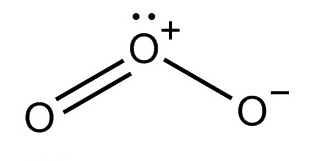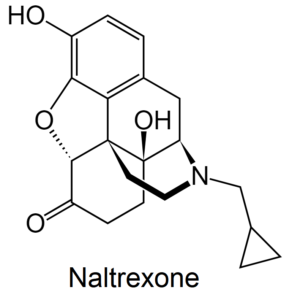The Controversies Over Ozone Therapy

The medical use of ozone is a highly controversial topic in the United States. In April of 2003 and revised in April of 2019, the FDA’s Code of Federal Regulations states that “Ozone is a toxic gas with no known useful medical application in specific, adjunctive, or preventive therapy (FDA 2019).”
Historically, mistakes have been made with different techniques when using ozone therapy that have caused serious consequences up to and including death. While this is of obvious concern, it’s worth recognizing that standard medications are the third leading cause of death after heart disease and cancer in the United States (Gotzsche 2014). When used properly, numerous researchers have concluded that ozone therapy is inexpensive and safe (Rowen 2019, Mauro 2019, Juchniewicz 2020, Fernandez-Cuadros 2020, Giurazza 2017).
One of the main arguments against ozone is that it is a potent producer of free radicals. In high enough concentrations, ozone can damage tissues. The best example is from inhaling ozone, which is often a part of air pollution. With chronic exposure, it can cause inflammation and damage to the lungs (Wiegman 2020). However, therapeutically, ozone is not inhaled, it is injected or absorbed through tissues other than the lungs.
Mechanisms of Ozone Therapy
Ozone is a gas composed of oxygen molecules. However, unlike oxygen—which is a stable combination of two oxygen atoms—ozone is an unstable combination of three. Generally for medical use, ozone is either injected into tissues, applied topically in oil, absorbed through rectal insufflation or dissolved in a patient’s extracted blood and returned to their bloodstream.
When administered therapeutically, ozone causes an antioxidant challenge to cells, upregulating antioxidant systems in the body. These same mechanisms also induce anti-inflammatory effects (Scassellotti 2020). Ozone appears to promote cell survival and replication, along with supporting energy production in the mitochondria—the powerhouse of the cell (Costanzo 2015). Research suggests that ozone promotes specific growth factors and tissue healing (Juchniewicz 2020). In addition, ozone appears to promote increased immune responses which may come into play for treating infectious diseases (Fernandez-Cuadros 2020).
Ozone and Musculoskeletal Conditions
Osteoarthritis of the knee is usually considered a type of wear and tear damage to the joint. A number of different types of injection therapies are commonly utilized, including steroids and hyaluronic acid. Ozone injections have recently been getting some attention with a number of published clinical trials. Unfortunately, the quality of the current research is quite low. However, on the whole, the data strongly suggests ozone therapy is safe, with potential benefits in immediate pain reduction and functional recovery (Sconza 2020).
Herniated discs are a common cause of low back pain. Ozone injections have also been investigated for herniated discs, usually combined with steroids. After injection, local oxygenation improves and the disc decreases in size, removing pressure from adjacent tissues. The treatment has a low incidence of side effects (0.1%) and appears to yield good long-term outcomes, with improvements in cases that are sustained for up to ten years (Giurazza 2017).
Early trials in wrist pain due to carpal tunnel syndrome are also suggesting benefits. A recent trial showed improvement over splinting alone with a single ozone injection for mild to moderate carpal tunnel syndrome (Bahrami 2019). An earlier study with ozone found that 87% of treated patients had good to excellent results with ozone. A series of ozone injections were administered and patients were followed up to one year after treatment (Zambello 2008).
Ozone and Infectious Diseases
Diabetic ulcers on the feet are quite common. Around 25% of diabetics will develop a foot ulcer over their lifetime and more than half of those will become infected (Neville 2016). Effectively healing the ulcer and eliminating infection is paramount to prevent complications. Severe complications from diabetic foot ulcers are all too common which can include losing a foot or potentially death.
Unfortunately, standard approaches aren’t always effective (Wen 2020). Poor oxygenation is often a component of diabetic foot ulcers and ozone therapy has been explored as a potential treatment. Of note, recent clinical trials have been so promising, that researchers are predicting that ozone may soon become a mainstay of treatment, although they caution that more research is needed to fully elucidate benefits (Wen 2020, Kushmakov 2018).

Ebola is a deadly viral disease in Africa that is often fatal. Case reports suggest that ozone therapies may have been helpful in managing patients during the recent Ebola crisis. While full clinical trials are needed, initial reports suggest the fatality rate of 60% may be significantly reduced with the addition of ozone (Rowen 2019).
More recently, discussions on using ozone for coronavirus have also been published. Hospitals in Spain have approved its use based on the reports of efficacy in treating Ebola and its immune boosting properties (Fernandez-Cuadros 2020). Other researchers are calling for clinical trials, since ozone appears to protect tissues from inflammatory damage, one of the main mechanisms causing poor outcomes in coronavirus cases (Martinez-Sanchez 2020).
Ozone and Sudden Hearing Loss
Sudden unexplained hearing loss is a condition requiring urgent treatment to try and restore lost hearing. Standard treatment usually focuses on oral steroids.
While evidence is also preliminary, ozone appears to significantly increase the chance for recovering hearing. In a retrospective analysis, steroids alone helped for slightly more than half of the subjects treated. When steroids were combined with ozone, outcomes improved further with 82% of patients restoring their lost hearing (Tasdoven 2017).
Ozone and Cancer
Ozone has long been touted as a cancer therapy, although evidence supporting its benefits is interesting, but limited. Animal studies show anti-tumour effects. Human clinical studies have been conducted, although none have been randomized trials. Most studies showed at least modest benefits with ozone improving initial outcomes when combined with standard therapies (Clavo 2018). Unfortunately, there remains a strong bias against the use of ozone in the United States, with doctors declaring it outright quackery, even though the cellular effects of ozone are quite well characterized.
Conclusions
Ozone therapy has been utilized in medicine for many years. When administered properly, it can be safe and potentially effective. Ozone treatments may benefit musculoskeletal conditions, infectious diseases, diabetic ulcers and sudden hearing loss. For cancer, limited data suggests potential benefits as well. For all indications, more robust data would help establish the most appropriate treatment approach. It’s unfortunate ozone has become such a controversial topic, since it appears to have clinical utility for a number of different health conditions.



